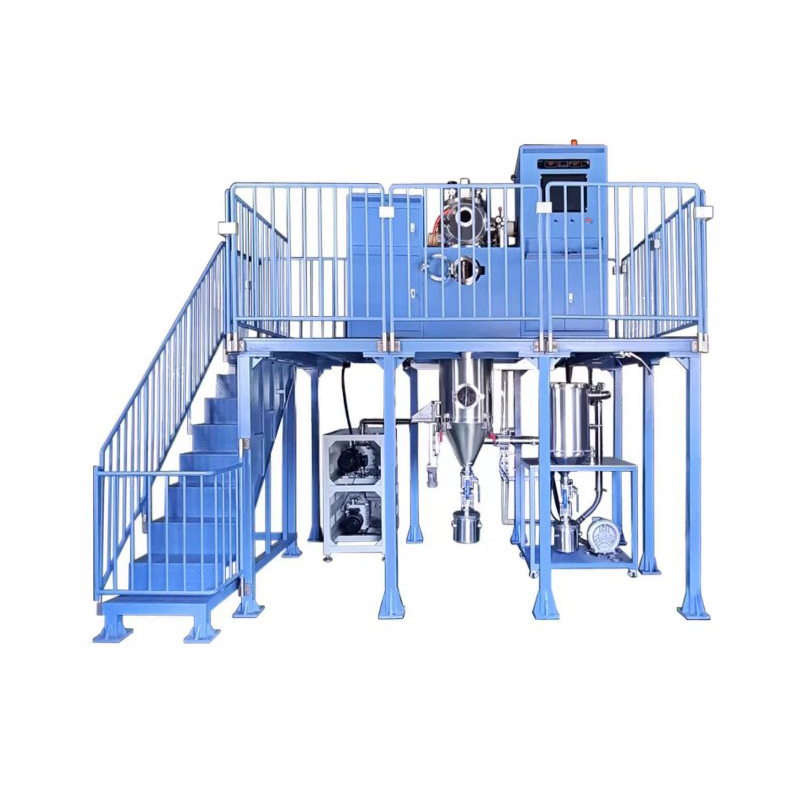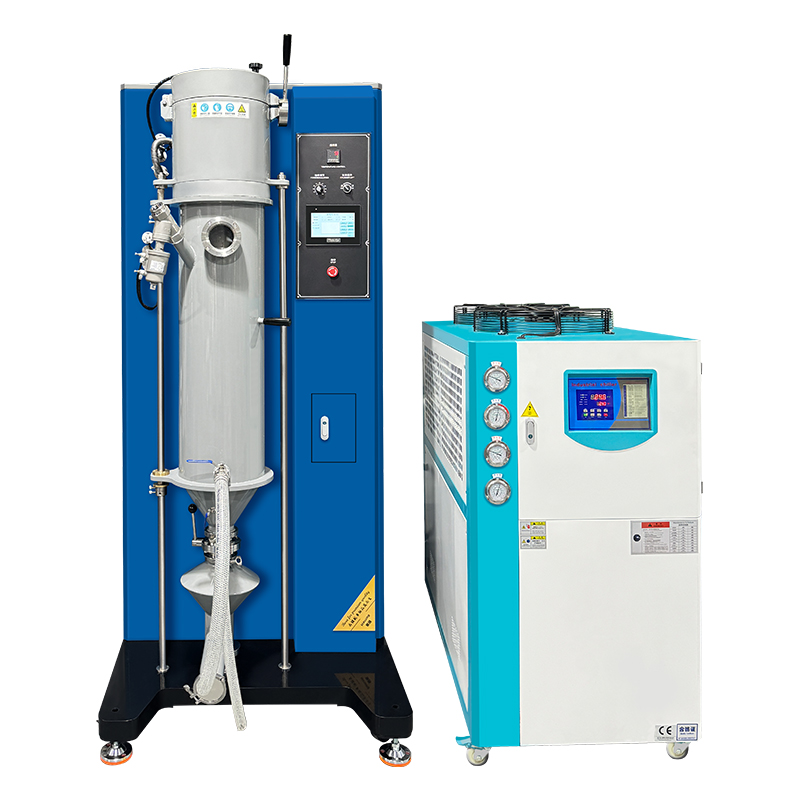What Is The Working Principle of Metal Powder Atomization Equipment
Metal powder atomization equipment plays an important role in many different kinds of sectors that depend on precise production and highly advanced components to drive advances in technology. This particular technology produces high-quality metal powders, which are needed for additive manufacturing, advanced metallurgy, and the manufacturing of high-performance materials. Atomization technology fosters innovation in aerospace, automotive engineering, electronics, and various other fields through rendering it easier to generate fine, uniform, and customized metal powders. Knowing the underlying concepts of metal powder atomization technology proves essential to businesses looking to improve substance properties as well as manufacturing efficiency.
Basics of Metal Powder Atomization
At its fundamental level, metal powder atomization is the procedure of turning molten metal into tiny, distinct particles. The whole process is meticulously managed to guarantee that the final powders are uniform in size, shape, and content. The main objective of atomization is to create metal powders that meet the high quality demands necessary for applications such as 3D printing, sintering, & powder metallurgy. The ability to produce uniform, high-purity powders is essential for improving mechanical properties as well as efficiency in final products.
Key Components of Atomization Equipment
Metal powder making machine is a structure made up of several important components, all of them affect the effectiveness and standard of the atomization process:
1. Melting Systems: Those often feature induction furnaces or electric arc furnaces that are capable of heating metals until they reach their precise melting points. The melting technique guarantees that the metallic material is uniformly melted and ready for atomization.
2. Atomizing Nozzles: Such specialized nozzles govern the rate of flow of molten metal and have the goal of splitting the liquid stream into tiny droplets. The nozzle shape and as well as material have a crucial effect on the final particle properties.
3. Gas/Liquid Medium: The atomization process sometimes uses gas with a high pressure (like nitrogen, and argon etc) or a liquid (like water etc) to break down the molten metal. The particular type of mediums used affects the particle's size, shape, & purity of the resulting powder.
4. Powder Collection Chamber and Filtration Systems: After atomization, fine metal powders are gathered in chambers that have modern filtration mechanisms that segregate the powders from the atomizing medium & assure homogeneity.

The Working Principle of Metal Powder Atomization
◆Molten Metal Preparation
This metal powder atomization equipment process starts with preparing the molten metal. The untreated metal or alloy is fed through the furnace & heated until it melts. The appropriate temperature must be closely handled to enable full liquefaction while eliminating oxidation or contamination.
◆Atomization Process
Once melted, the metal is driven through atomizing nozzles under regulated circumstances. The tips of the nozzles generate an uninterrupted flow of molten metal, which collides with a high-pressured gas (in gas atomization) or a high-velocity water jet (in water atomization). This interaction divides the molten stream into numerous small droplets. The shape and distribution of those droplets are determined by the atomizing medium's rate and pressure, as well as the nozzle design.
◆Cooling & Solidification
As the droplets form, they quickly cool and harden. Rapid cooling hinders the formation of big crystals, producing fine, homogeneous powders. Modern atomization technology enables operators to modify the cooling rate, in addition to the size of the particles, shape, and microstructure of the powders. This degree of control is crucial in applications which require precise material qualities.
◆Powder Collection
Solidified metal particles have been collected in a chamber and divided from the surrounding gas or liquid media. Systems for filtration maintain only homogeneous powders and remove any impurities or large particles. The resulting powders are then dried, sieved, and organized by size for utilization in a variety of applications.
Types of Atomization Techniques
Various atomization procedures are adapted to specific requirements and applications:
▶ Gas Atomization: This method of operation uses pressurized inert gases, like nitrogen or argon, in order to break up the molten metal streams. Gas atomization produces powders that are highly spherical and pure, which makes them perfect for accuracy applications like aerospace parts and 3D printing.
▶ Water Atomization: It's also a relatively inexpensive method which employs high-velocity water spray to shatter molten metal. Although the resulting powders are not as spherical and may have some oxidation, water atomization makes sense for large-scale production and uses requiring cost effectiveness.
▶ Ultrasonic and centrifugal atomization: They are creative techniques for producing specific powders for particular uses. Ultrasonic atomization uses vibrations at high frequencies to break down the molten metal, while centrifugal atomization utilizes that revolve disks to make fine particles.
Advantages of Atomization Technology
Metal powder making machine has multiple significant advantages:
1. Spherical, High-Purity Powders: Atomization processes, especially gas atomization, lead to powders that have exceptional sphericity and low impurities.
2. Customizable Particle Size: The parameters of the process may be adjusted to get the appropriate particle size and distribution that improves the material's performance.
3. Versatility: Atomization is able to handle an extensive selection of alloys and metals, notably Stainless Steel, titanium, and superalloys, which makes it appropriate for plenty of industries.
Applications of Metal Powder Atomization Equipment
Atomized metal particles are widely used in an assortment of industries because of their versatility.
● Aerospace and automotive industries: these employ outstanding performance alloys produced through atomization in jet engines, turbine blades, as well as lightweight car components.
● Additive Manufacturing: Atomized powders are needed for 3D printing to work, which makesures the fabrication of intricate geometries and exceptionally strong components.
● Electronics: Conductive metal powders are utilized in printed circuit boards, sensors, & microelectronics.
● Coatings and Surface Treatments: Atomized powders generate elegant coatings that improve resistance to wear and corrosion prevention.

Technological Innovations in Atomization Equipment
Atomization improvements in technology have contributed to improved quality and efficiency. Recent advances include:
■ Enhanced Nozzle Design: Improved nozzle shapes allow for improved control over the size of particles and distribution.
■ Automation and Monitoring: The integration of continuous surveillance and automated controls offers consistent quality whilst reducing human error.
■ Energy Efficiency: Improvements in power-efficient furnaces and fragmenting devices reduce operational expenses and impact on the environment.
Challenges and Solutions
Considering its advantages, metal powder atomization equipments poses challenges.
● High energy requirements: Improvements in furnace layout and energy recovery technology have reduced prices.
● Contamination Risks: Refined materials and strict control measures minimize contamination.
● Uniformity in Complex Alloys: Sophisticated processes including multistage the atomization process enhance uniformity in alloyed powders.
Conclusion
Metal powder atomization technology is essential for manufacturing the premium powders needed for modern production. Knowing the basic principles helps industry to use contemporary atomization technology to meet specific performance needs. As improvements improve both productivity and quality, the foreseeable future of metal powder production provides additional opportunities for technological development and industrial application. Please contact Hasung for more information!

Tel: +86 17898439424
E-mail: sales@hasungmachinery.com
WhatsApp: 0086 17898439424
Address: No.11, Jinyuan 1st Road, Heao Community, Yuanshan Street, Longgang District, ShenZhen, China 518115









































































































